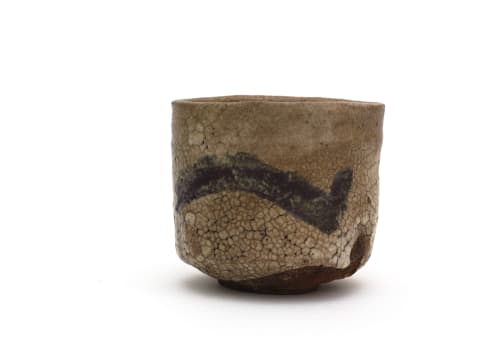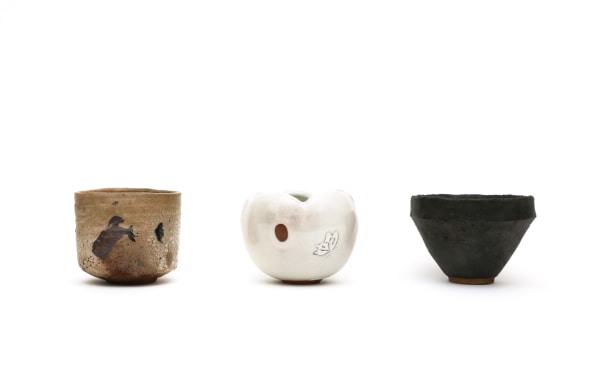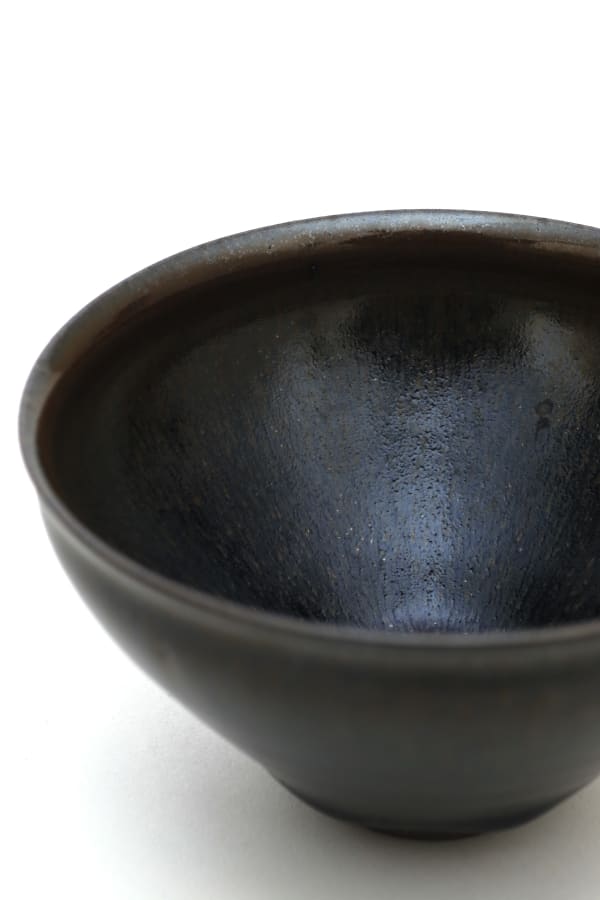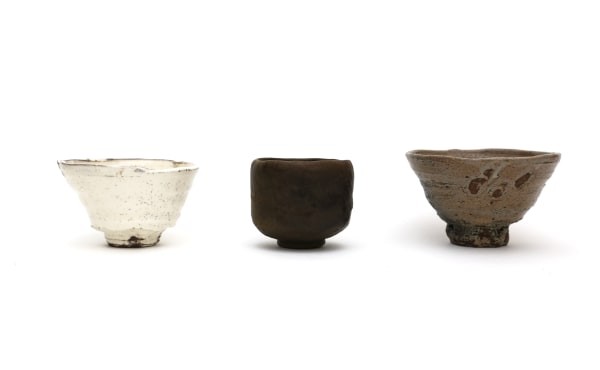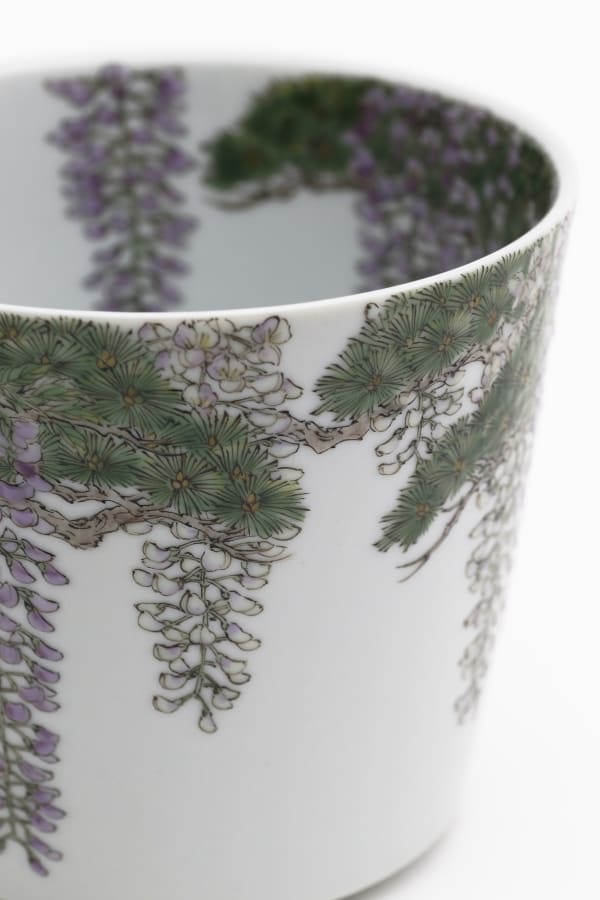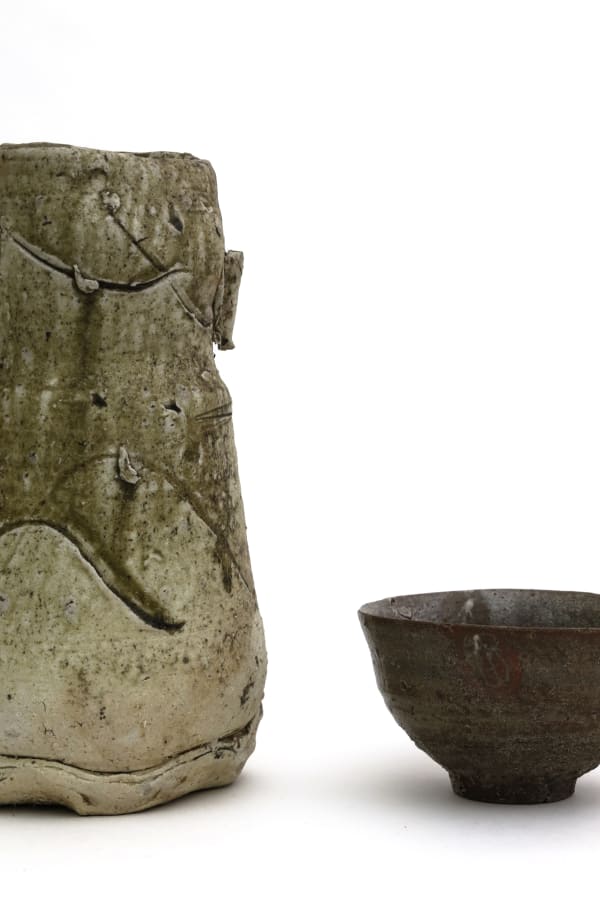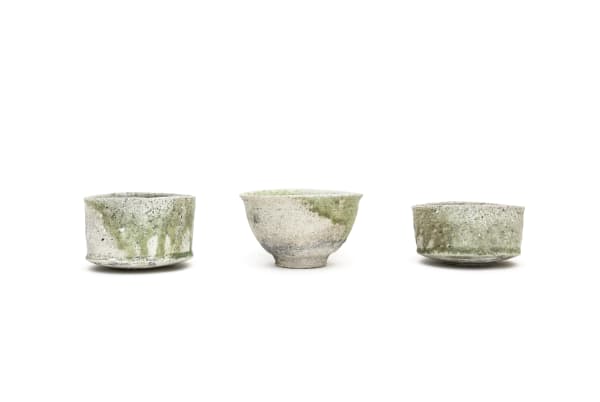Tea Bowls: Art of Five Senses : Contemporary Japanese Tea Ceremony Wares
Expressing Gratitude for Ippodo Gallery’s First 10 Years
Shoko Aono
“It (Teaism) insulates purity and harmony, the mystery of mutual charity, the romanticism of the social order. It is essentially a worship of the Imperfect, as it is a tender attempt to accomplish something possible in this impossible thing we know as life.“ — Okakura Kakuzo (‘The Book of Tea’)
When you place a tea bowl in the palm of the hand, you will find that its shape, color, weight, texture and even the history it encompasses, transmits itself to you.
As you drink the tea prepared by your host, your mind will be drawn towards the tea bowl, creating a state similar to meditation.
In feudal times, the samurai would leave their swords outside when entering a tearoom, their senses being heightened by the proximity to danger as they enjoyed a bowl of tea. Today, the tea ceremony provides a break from the ordinary, allowing contemporary people to escape the tumult of everyday life.
Regardless of who made it, each bowl is imbued with the extraordinary feelings of the potter and I personally have been able to learn more of their philosophies through their tea bowls than through their words. Each contains a unique microcosm that cannot be found in other art forms like painting or sculpture, continually enlarging the freedom of the viewer.
This year marks our gallery’s tenth anniversary and we would like to take this opportunity to return to our roots. With the support of numerous contemporary artists, we are proud to present ‘Tea Bowls: Art of the Five Senses’.
Each of these tea bowls embodies the dreams and prayers of the potter and I believe that the more people hold them in the palm of their hands, the more they will shine.
In closing I would like to express my sincere gratitude to all the artists who have created these works and to everybody else who has supported Ippodo over the years.
In celebration of Ippodo Gallery NY’s 10th anniversary, the gallery is delighted to announce an exhibition of tea wares by more than 15 contemporary Japanese potters. Ranging from young artists to master craftsmen, the works evoke a wonderful feeling of harmony. The five senses are magnified as you hold a bowl in your palms, with each acting as their own microcosmos.
Ippodo has always focused on the tea-related artworks as a core cultural component of Japan, with tea ceremony and its accoutrements at the center of that ideology. This is the second exhibition of tea wares by these Ippodo artists, as the first was held in 2014. Exhibiting artists include Keiji Ito, Hiromi Itabashi, Kohei Nakamura, Kyusetsu Miwa XII, Chozaemon Ohi XI, Tetsu Suzuki, Shiro Tsujimura among others.
With the unique process of tea ceremony, appreciation for tea wares differs from that of other crafts. Unlike an artwork that is only appreciated visually, tea ceremony embodies beauty and joyfulness, as achieved through contemplation and tranquility. During the ceremony, the bowl is raised with both hands, and the drinker savors the texture of the piece against his or her lips. Reflection on the green color of the tea, the full weight of the vessel, and the shape of the kodai, or the foot of the bowl, all add to the experience of pleasure.
The tea wares are transformed through shape and glaze, the full object ripe with discovery in detail. Each modification, no matter how small, becomes a source of appreciation--a culmination of Japanese aesthetics.
The Japanese tea ceremony was first developed during the Azuchi Momoyama period (1573-1603), with the wabi-cha style perfected by Sen-no-Rikyu (1522-91), which spread widely among the Samurai class. The guest entrance to the tea ceremony room is extremely small and low, forcing the guests to enter on their knees, to oblige the Samurai to leave swords outside. A Samurai valued his sword as highly as his life, so to part with it in order to participate in tea ceremony no doubt created a heightened atmosphere of humility. As such, the small tea room must have offered the Samurai a unique form of freedom, equalizing all who entered.
While the earliest tea ceremonies were restricted to feudal lords and high-ranking samurai, the rituals gradually became popular with the rich merchant class during the mid-Edo period (18th century). Edo-period tea ceremony was characterized by refinement, combining the Zen Buddhism with the Way of the Samurai. From spiritual sublimation across society to the delicate and intensive craftsmanship of utensils, (particularly tea bowls), tea ceremony grew in cultural and ultimately historical importance. At different points in history, a single tea bowl has even been considered more important than territory. A simple tea bowl contains a sense of great presence and infinite power: Microcosms of a great maternal spirit.
Various traditional styles of tea bowl continue today: Raku, Ido, Hagi, Karatsu and Shino are still being created. Japanese potters often dedicate their lives to the creation of the perfect tea bowl. The tea master devotes all his energies to a single bowl of tea to make it a unique encounter, allowing the guest to appreciate the experience through all five senses.
But the sensory experience of the tea ceremony is not merely solitary. The ritual allows for important communication; it joins people together, releasing the boundlessness of imagination to flourish. In a single tea bowl, happiness can be found.
